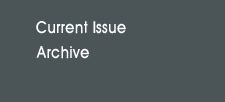|

|
 
|
|
|
Full Text: 
|
|
|
|
¿µ³²ÀÇ´ëÇмúÁö Yeungnam Univ J Med 2018;35(1):54-62
|
|
ORIGINAL ARTICLE
|
|
Comparison of sevoflurane and propofol anesthesia on the incidence of
hyperglycemia in patients with type 2 diabetes undergoing lung surgery |
|
|
|
Hyuckgoo Kim, Jisoo Han, Sung Mee Jung, Sang-Jin Park, Nyeong Keon Kwon
|
|
Department of Anesthesiology and Pain Medicine, Yeungnam University College of Medicine, Daegu, Korea
|
|
|
|
Corresponding Author: Sung Mee Jung, Department of
Anesthesiology and Pain Medicine, Yeungnam University
College of Medicine, 170, Hyeonchung-ro, Nam-gu, Daegu
42415, Korea
|
|
Tel: +82-53-620-3354, Fax: +82-53-626-5275
|
|
E-mail: applejsm@gmail.com
|
|
Received: March 26, 2018, Revised: May 10, 2018
Accepted: May 15, 2018
|
|
|
|
Abstract
|
|
|
|
Background: The type and regimen of anesthesia may affect perioperative hyperglycemia following major
surgical stress. This study compared the effects of sevoflurane and propofol on the incidence of hyperglycemia
and clinical outcomes in diabetic patients undergoing lung surgery.
Methods: This retrospective study included 176 patients with type 2 diabetes mellitus who had undergone
lung surgery. Blood glucose levels and clinical outcomes from the preoperative period to the first 2 postoperative
days (PODs) were retrospectively examined in patients who received sevoflurane (group S, n= 87)
and propofol (group P, n=89) for maintenance of general anesthesia. The primary endpoint was the incidence
of persistent hyperglycemia (2 consecutive blood glucose levels >180 mg/dL [10.0 mmol/L]) during the perioperative
period. The secondary composite endpoint was the incidence of major postoperative complications
and 30-day mortality rate after surgery.
Results: Blood glucose levels similarly increased from the preoperative period to the second POD in both
groups (p=0.857). Although blood glucose levels at 2 hours after surgery were significantly lower in group
P than in group S (p=0.022; 95% confidence interval for mean difference, -27.154 to -2.090), there was no
difference in the incidence of persistent hyperglycemia during the perioperative period (group S, 70%; group
P, 69%; p=0.816). The composite of major postoperative complications and all-cause in-hospital and 30-day
mortality rates were also comparable between the two groups.
Conclusion: Sevoflurane and propofol were associated with a comparable incidence of perioperative hyperglycemia
and clinical outcomes in diabetic patients undergoing lung surgery.
|
|
|
|
Key Words: Keywords: Diabetes mellitus; General anesthesia; Lung surgery; Propofol; Sevoflurane
|
|
|
|
References |
|
|
|
|
|
|
|
|
|
|
|
|
|
|
|
|
|
|
|
|
|
|
|
|
|
|
|
|
|
|
|
|
|
|
|
|
|
|
|
|
|
|
|
|
|
|
|
|
|
|
|
|
|
|
|
|
|
|
|
|
|
|
|
|
|
|
|
|
|
|
|
|
|
|
|
|
|
|
|
|
|
|
|
|
|
|
|
|
|
|
|
|
|
|
|
|
|
|
|
|
|
|
|
|
|
|
|
|
|
|
|
|
|
|
|
|
|
|
|
|
|
|
|
|
|
|
|

![]()